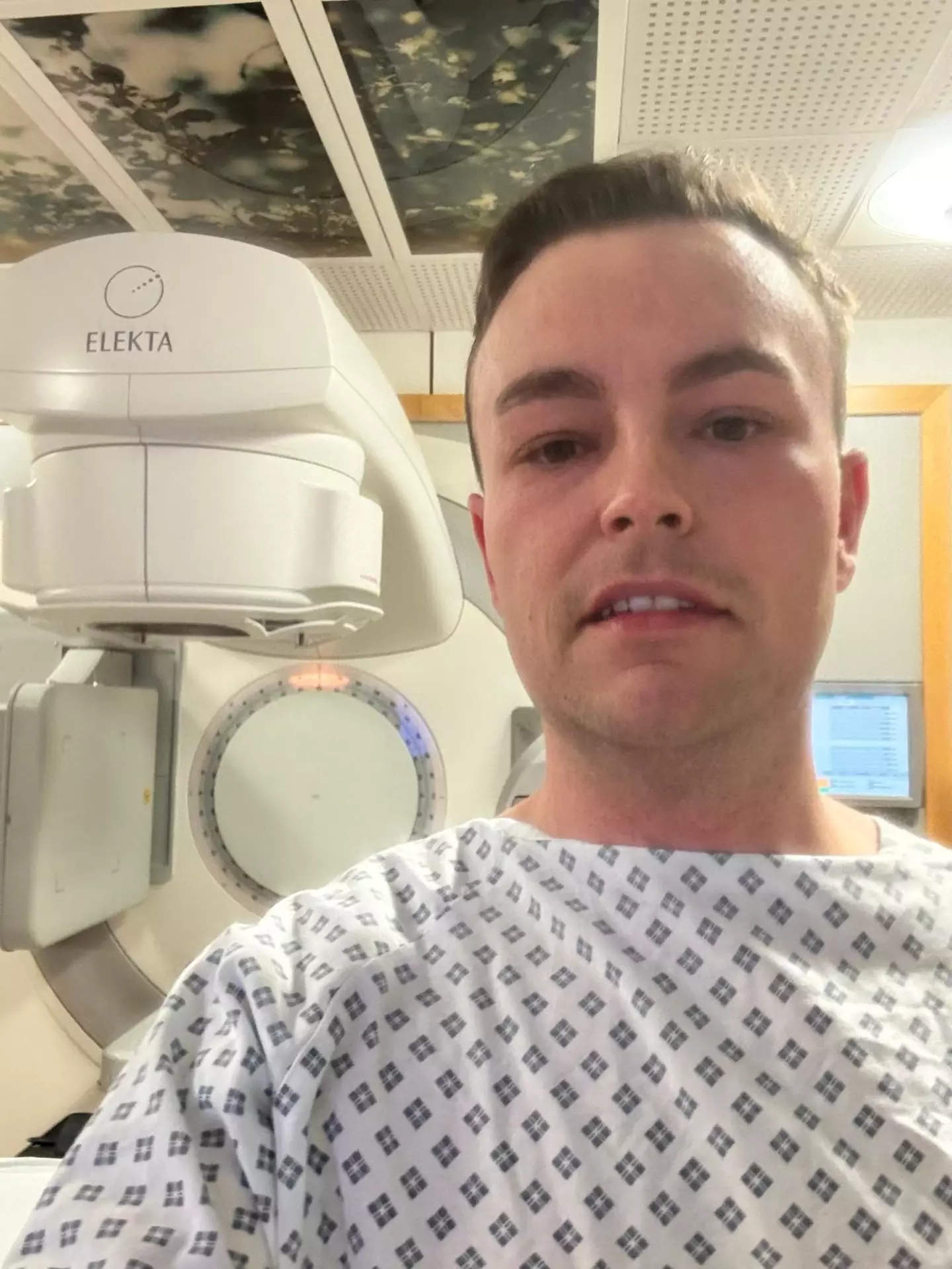Singer Billy Joel has canceled all of his upcoming gigs after being diagnosed with a brain disorder most common in those aged 65+.
The 76-year-old has called off 17 dates across 2025 and 2026, including two dates in the UK after doctors told the artist he should stop live performances.
Known for known for classic hits such as ‘Piano Man’, ‘Uptown Girl’ and ‘We Didn’t Start the Fire’, fans will be disappointed by the news, but it is of course important Joel now receives the treatment he needs.
The New Yorker has been diagnosed with Normal Pressure Hydrocephalus (NPH), a condition that affects about 0.2 percent of people between the ages of 70 and 80, according to the Cleveland Clinic.
Joel’s team issued a statement which detailed his diagnosis on Instagram on Friday (May 23).


The singer has canceled his upcoming tour dates (Ethan Miller/Getty Images)
It read: “Billy Joel has announced that he will be cancelling all scheduled concerts following a recent diagnosis of Normal Pressure Hydrocephalus (NPH). This condition has been exacerbated by recent concert performances, leading to problems with hearing, vision, and balance.
“Under his doctor’s instructions, Billy is undergoing specific physical therapy and has been advised to refrain from performing during this recovery period.
“Billy is thankful for the excellent care he is receiving and is fully committed to prioritizing his health. He is grateful for the support from fans during this time and looks forward to the day when he can once again take the stage.”
“I’m sincerely sorry to disappoint our audience and thank you for understanding,” the singer added.
Symptoms of Normal Pressure Hydrocephalus (NPH)
Cleveland Clinic states trouble lifting your feet, steps being shorter and unsteady, plus freezing or walking uncertainly are all symptoms of NPH.
Other symptoms include mental and physical slowness, problems with memory, changes in emotional behavior, and even erectile dysfunction.


Billy Joel has been diagnosed with NPH (Myrna M. Suarez/Getty Images)
What causes NPH?
There may actually be a connection to brain conditions such as Alzheimer’s and dementia, Cleveland Clinic notes.
The health site states: “Researchers are continuing to explore exactly how and why NPH happens and whether or not other conditions can contribute to it. Answers to those questions could eventually help prevent or better treat this condition.”
Conditions such as a brain aneurysm, brain tumours, infections of the brain and a person having a stroke can also cause NPH.
Thankfully, NPH is extremely treatable, including surgery that sees a device called a shunt to minimise the symptoms.
Treating NPH rarely involves any form of medications.
Featured Image Credit: Myrna M. Suarez/Getty Images


A simple test requiring just a pen and paper could reveal if someone close to you has dementia – before having been diagnosed.
A doctor specializing in the degenerative disease has taken to his YouTube channel to share the scientifically proven, yet ‘easy-to-administer’, exam that can be done in less than a minute – although it may take longer for someone suffering with the condition.
That specialist is Dr Miguel Rivera, who for almost two decades has been working with dementia patients – which tragically included his own dad.
“In July 2018 I lost my dad to Lewy Body dementia, he was 86 years old. My experience as a dementia doctor did not quite prepare me for the difficult experience of being a dementia caregiver,” Rivera shares on his website.


The simple pen and paper test can be completed in under a minute (Getty stock)
Adding: “This was, without a doubt, one of the most difficult experiences of my life. We are all together in this!”
Yes, we certainly are – so, let’s delve into the simple ‘pen and paper’ test.
Speaking to his followers on YouTube, River said: “Are you concerned about your loved one having cognitive problems? Well, there is a simple easy-to-administer screening test that you can do at home that has even been scientifically validated… and this is the clock drawing test.
“This simple test checks many important cognitive functions including short-term memory, language skills, visual spatial awareness and executive function – and the instructions are very simple.
“Number one, tell your loved one draw a clock. Number two, put all the numbers in it. Number three, set the time to 10 minutes past 11. Any major deviations from this should be discussed with your doctor.”


The clock-drawing test is designed to gauge the mental capacity of someone you believe may have dementia (Getty stock)
He added: “You can also check online there is lots of good information on the clock drawing test.”
According to Very Wealth Health, it measures several cognitive abilities at once, including attention, hearing comprehension, visual memory, and motor skills.
Just like Rivera mentioned, Alzheimer’s sufferers are asked to draw a clock with hands pointing to a specific time to gauge their mental capacity.
The drawing is then scored – which can be done in several different ways – but usually there are points awarded based on the sequence of numbers, placement of numbers, and the placement of the hands.
If you’ve been affected by dementia or Alzheimer’s and would like to speak with someone in confidence, contact the Alzheimer’s Association via 800.272.3900 open 24 hours seven days a week.
Featured Image Credit: Getty Images/Mariia Demchenko
Topics: Dementia, Health, Mental Health, YouTube


A woman is raising awareness of the symptoms she ‘brushed off’ for ‘years’ before being diagnosed with colon cancer.
It can be easy to fall down the rabbit hole of googling symptoms, catastrophizing and self-diagnosing yourself with some rogue disease.
However, it can also be easy to spot small symptoms and dismiss them, reassuring yourself it was a one off, is nothing to worry about and because you’re feeling fit and healthy, you’re fine.
However, a woman named Crystal who ended up with a ‘shock’ diagnosis of colon cancer in 2022 has since opened up about when she ‘first noticed something was off’ but why it took ‘years of ignoring the symptoms’ before she was finally diagnosed.
In an interview with The Patient Story, Crystal explained she ‘started to notice there was blood in [her] stool’ (poo) in 2012 – a whole decade before her diagnosis.
“It would last for a couple of days,” she continued. “And so I would google it and it would say it could be anything from haemorrhoids to colon cancer.
“There were so many things it could be but naturally, I’m just like, ‘Well, I don’t have cancer, so it’s probably haemorrhoids or something.'”
Crystal recalls the blood would stop appearing ‘after a couple of days’ and so ultimately she ‘just kind of let it go’.
But a few years ago, she decided to go to a doctor.


Crystal has warned people never to ignore blood in their stool (Getty Stock Image)
The doctor scheduled a colonoscopy for Crystal – a colonoscopy ‘an examination of the inside of your large intestine (colon),’ Cleveland Clinic explains.
“It’s helpful for diagnosing gastrointestinal diseases, such as inflammatory bowel disease and colon cancer. It can also help treat and prevent colon cancer. Healthcare providers recommend routine colonoscopies for middle-aged and older adults to screen for cancer,” it states.
However, after getting ‘really sick’ from drinking the liquid you need to consume prior to the colonoscopy, Crystal didn’t end up going through with the examination.
“And I didn’t reschedule. I didn’t go back,” she continued. “And then as the years went on, it became easier to just kind of ignore.”
Crystal explained the blood in her stools would ‘come back’ but then ‘go away’ – the fluctuation making it easier for her to dismiss the symptom.
But in 2022, she started experiencing ‘really excruciating pain’ in her lower abdomen.


Crystal’s symptoms became more severe (Getty Stock Image)
She described it as being ‘almost like a menstrual cramp but way worse’.
Crystal rushed herself to urgent care, but ultimately after the pain went away after several days, she left.
However, when she began experiencing abnormal UTIs – her urine a ‘really disgusting smell’ – she got antibiotics, but the UTIs returned weeks later – this going on for around two to three months.
When the antibiotics continued to not work, Crystal underwent a CAT scan and was called straight back so doctors could do a scope of her bladder – doctors noticing something ‘intruding into it’.
After being sent to a bigger hospital, Crystal had further scans alongside finally getting a colonoscopy and was ultimately diagnosed with colon cancer.
Crystal went through multiple surgeries, chemotherapy and lost her bladder too.
Despite the trauma of the experience, she reflects it forced her to ‘let people in’, advising anyone else in a similar position to do the same.
She said: “That’s the only thing that got me through it.”
If you’ve been affected by any of these issues and want to speak to someone in confidence, contact the American Cancer Society on 1-800-227-2345 or via their live chat feature, available 24/7 every day of the year.
Featured Image Credit: The Patient Story/YouTube
Topics: Cancer, Health, Mental Health, Social Media, US News, YouTube, Colon cancer


A dad who has had to fend off four brain tumors over the last 14 years has revealed the bizarre symptom he experienced before his diagnosis.
Dan Horrocks, 33, was first diagnosed with a brain tumor back in August 2011 after receiving a free eye test at an opticians.
The optician noticed swelling on Dan’s optic nerves during the eye scan, and just one day later he was having brain surgery at Queen Elizabeth Hospital (QEH) in Birmingham, UK and a round of radiotherapy.
But just when Dan thought the nightmare was over, three years later in 2014 he was diagnosed with another brain tumor, then a third in 2018, and finally another in October last year.
Following his latest round of treatment, Dan has revealed an unusual symptom he experienced before one of his diagnoses – and it’s bizarre.


Dan Horrocks experienced an unusual symptom before one of his diagnoses (SWNS)
Ahead of his third diagnosis, Dan said he started craving olives – despite having never liked them before. And not only that, but he also started craving spinach and tomatoes for breakfast too.
The third tumor was picked up in a routine scan, but Dan and his wife, Sonia Khan, noticed the unusual symptom beforehand.
All of Dan’s tumors have been ependymomas – rare tumors which usually affect children around age five or adults around age 45.
He had brain surgery in November and spinal surgery in December for his latest diagnosis, but the tumors are in cells which line the paths where cerebral spinal fluid moves through the spine, and the cancer could come back anywhere in his spine or brain.
Doctors have said that Dan has had the maximum radiotherapy they can safely give him on the NHS, and chemotherapy is only likely to be 14 percent successful in treating his tumors.


The dad has sadly been diagnosed with four brain tumors over the last 14 years (SWNS)
Now on his ‘last roll of the dice’, Dan is raising money to go to MD Anderson Cancer Center in Houston, Texas, to explore new treatments including genetic testing to find a personalized remedy.
He and his wife have raised over $60k (£50k) so far – exceeding their fundraising goal by over $10k.
The money will be spent on travel and consultations – including genetic tests on Mr Horrocks and his tumor samples – to see if a personalized treatment can be found.
Dan was diagnosed with his first of four brain tumors after suffering excruciating headaches, sickness, and dizziness. He had to learn to walk, talk and ‘think’ again after his first surgery.


Dan with his wife Sonia Khan and their son Elijah (SWNS)
Following the influx of donations for his fundraising mission, Mr Horrocks said he was ‘bowled over’ by the generosity he’s received.
He said: “I’m so shocked and overwhelmed with how quickly the money has come in. This could be the first step towards an innovative new treatment we can bring to the UK.
“The NHS staff have all been amazing – they said they can do surgeries but not much else more. That felt a bit like the end of a road and I’ve always tried to avoid that.”
If you’d like to donate to Dan’s GoFundMe, you can do so here.
Featured Image Credit: SWNS


A person living with Dissociative Identity Disorder has shared some of the misconceptions around the condition.
Despite much progress around the public perception of mental health, most attention has been directed at conditions such as depression and anxiety.
It’s understandable, in a sense, as these are the most common conditions, and are, of course, very serious.
But focussing on just the most common problems also pulls focus from some of the more complex mental health conditions, and allowed damaging misconceptions around them to continue.
Conditions like personality disorders such as Emotionally Unstable Personality Disorder, previously called Borderline Personality Disorder, and Antisocial Personality Disorder still have a lot of stigma attached to them.
Among them is Dissociative Identity Disorder, previously called Multiple Personality Disorder.


The poster clarified some of the misconceptions around the condition. (Jena Ardell / Getty)
One person who was diagnosed with the condition has shared some of the ways in which this condition is misrepresented.
There was one film in particular which they expressed their concern about.
This is the movie Split starring James McAvoy, which plays into the idea of someone being dangerous due to their struggle with their mental health.
The condition is one of a few which fall under the category of a ‘dissociative’ disorder.
Others include depersonalisation-derealisation disorder, where someone feels as though they are outside their own body observing their actions.
There is also dissociative amnesia, which is where someone has no memory of certain periods of their life.
Dissociative Identity Disorder is distinct for someone having several distinct identities, sometimes having their own names and personalities.
The poster shared some misconceptions and information about the condition on Reddit.


The condition can be extremely difficult for people living with it. (MementoJpeg / Getty)
For example, referring to the body as a ‘core’ where all the different alters exist together, with alters being the different personalities.
What is also important is that they explain that each alter is their own individual person, and that some can become more dominant.
These can front, in other words, be the one presenting outwards more often, and if there’s one which someone feels is the ‘main’ identity that can be a called a ‘host’.
The social media post also explained that it’s not just the case that someone can switch externally, different alters can also be speaking to each other internally the whole time.
However, the central point is that as with all mental health conditions people with DID are living with a serious long-term illness, and people who have a mental health problem are far more likely to be a danger to themselves than others.
As they put it on the post: “No, we aren’t like the guy from Split. We aren’t dangerous. We don’t switch and go to town k*lling and harming people. Do not associate us with that stigma.”
Featured Image Credit: Getty Images/SDI Productions/Tunatura
Topics: News, US News, UK News, World News, Health, Mental Health




